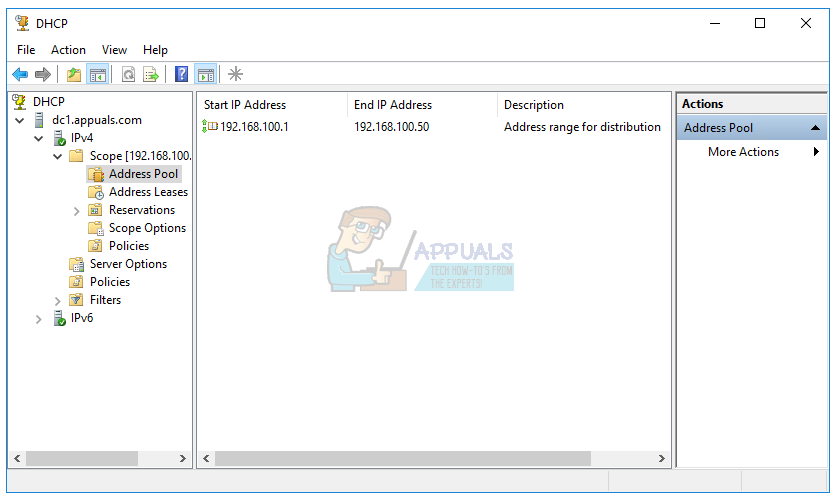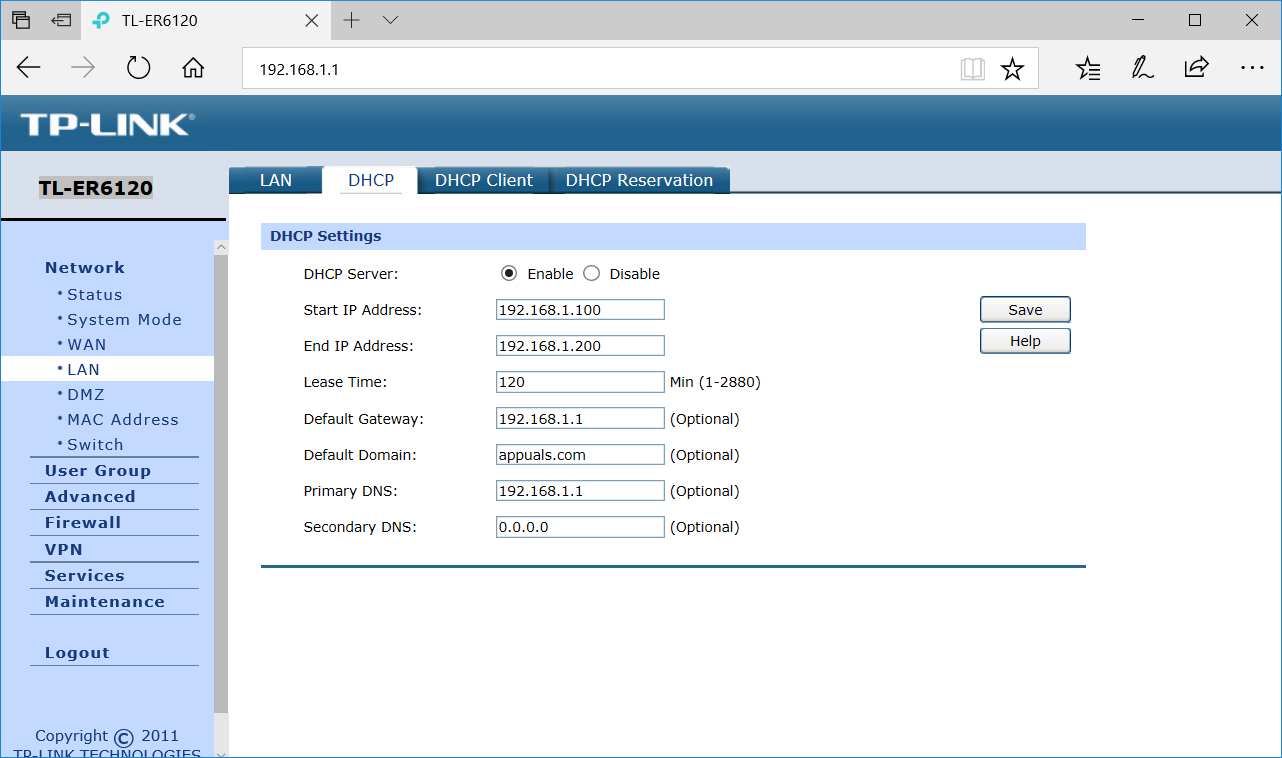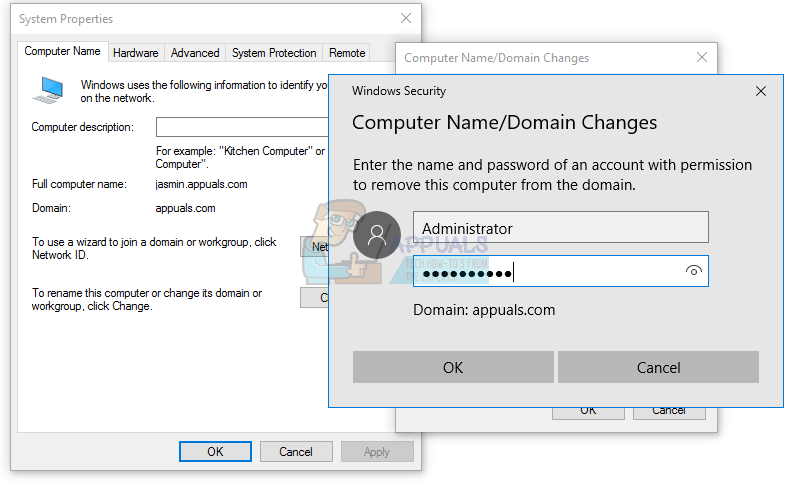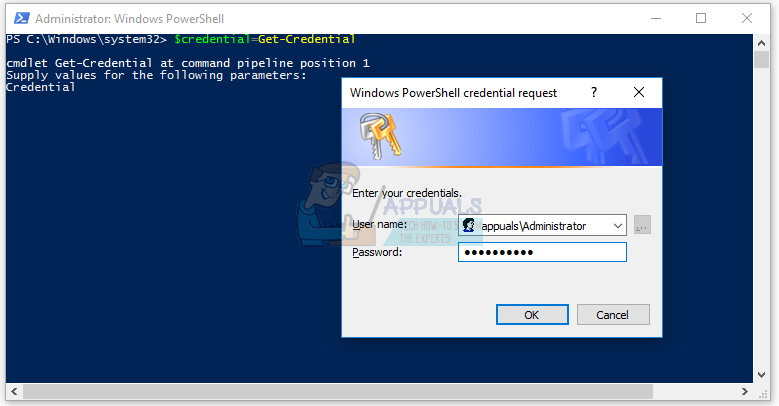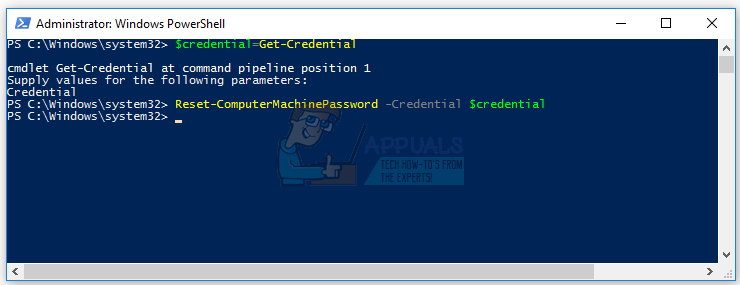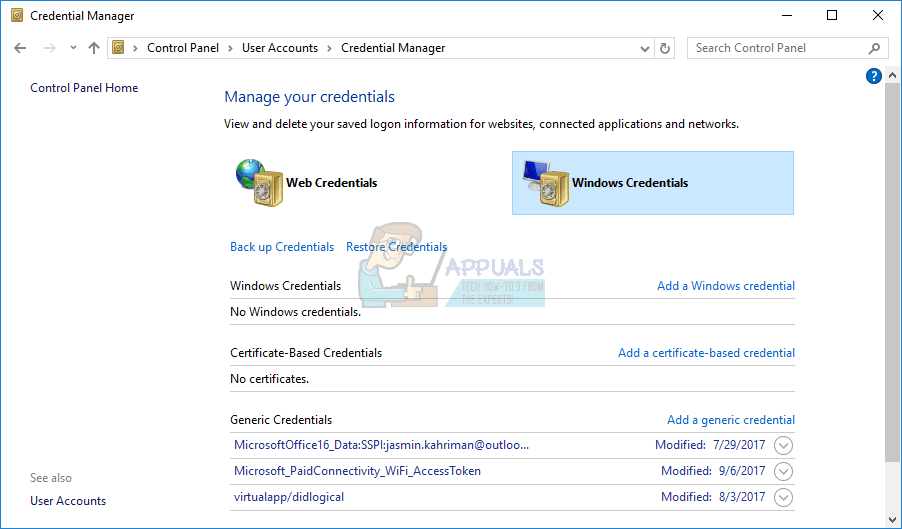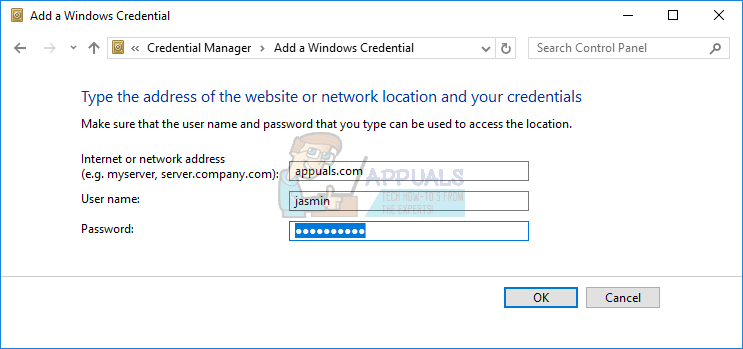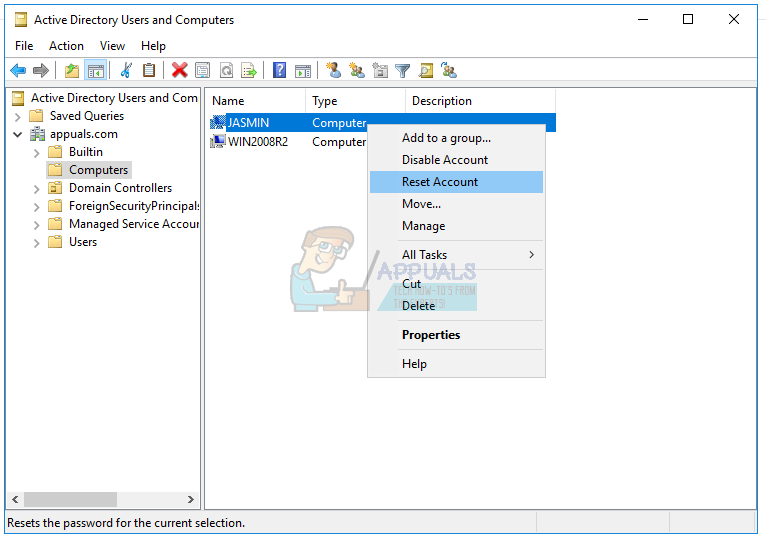This issue occurs on client and server operating system, from Windows XP to Windows 10 and from Windows Server 2003 to Windows Server 2016. There are different reasons why this issue occurs, including a problem with a user account, the problem with the relationship between client and domain server and others. For this article, I created domain infrastructure appuals.com on Windows Server 2008 R2 and Windows Server 2016. There are seven methods which will help you to solve this issue.
Method 1: Check DHCP configuration
Did you add new DHCP server or reconfigure your current DHCP pool? If not, please read next method. If yes, please continue reading this method. There are two ways how you can assign IP addresses to hosts in your computer network, including static and dynamic addressing. Static addressing is manually assigning IP addresses to your machines which consume much more time and decrease the productivity of IT Administrator. We are recommending you to use dynamic addressing using DHCP (Dynamic Host Computer Protocol) protocol. The best practice will include static addressing for servers, storage and network printers, and dynamic addressing to other hosts in the network. Few users encouraged problem after they added another DHCP server in the current network. The problem was wrong DHCP pool for hosts in the network. Based on that, we are recommending you to check is DHCP working properly and are you using right network subnet. We will show you how to check DHCP on Windows Server 2016 and router TP-Link TL-ER6120. Imagine, the right network is working in C class, 192.168.1.0/24. So, let’s start. In the second example, we will show you how to check DHCP configuration on TP-Link router. If you do not know how to access your router, please read the technical documentation of your router.
Method 2: Rejoin a Computer from a Domain
In this method, you will need to rejoin your client machine from a domain. For this action, you need to use Domain Administrator account which has permission to do changes like join or rejoin machine from the domain. We will show you how to rejoin Windows 10 Pro from Windows Server 2016 Standard. The same procedure is compatible with other client and server operating system, including client operating system from Windows XP to Windows 8 and server operating system from Windows Server 2003 to Windows Server 2012 R2.
Method 3: Reestablish trust through PowerShell
In this method, we will reestablish trust between the domain controller and client using PowerShell. You will need to log on using a local Administrator account.
Method 4: Add domain controller to Credential Manager
In this method, you will use Credential Manager where you will add domain controllers account in Windows Credential. We will show you how to do in on Windows 10.
Method 5: Use Netdom.exe to Reset a Machine Account Password
This method is compatible with Windows Server 2003 and Windows Server 2008 R2. If you are using a newer version of server operating systems, please read next method. We will show you how to reset a machine account password on Windows Server 2008 R2.
Method 6: Reset Computer Account
In this method, you will need to reset computer account using Active Directory User and Computers tool which is integrated into servers with Active Directory Domain Services role. The procedure is simple and compatible with server operating systems from Windows Server 2003 to Windows Server 2016.
Method 7: Perform a System Restore
We talked so much time about System Restore because it helped us so many times in troubleshooting issues with system or application. Also, system restore can help you to solve the issue with reverting your system to the previous state when everything worked properly. Please note that you can not restore your Windows machine to the previous state if System Restore is turned off. Please read how to perform a System Restore.
How to Fix ‘The Security Database on the Server does not have a Computer Account…Fix: An Active Directory Domain Controller for the Domain Could Not be ContactedThe FTC Does Not Trust Microsoft and Claims That the Company Has Plans to Keep…Fix: Windows Can’t Communicate with the Device or Resource (Primary DNS Server)

